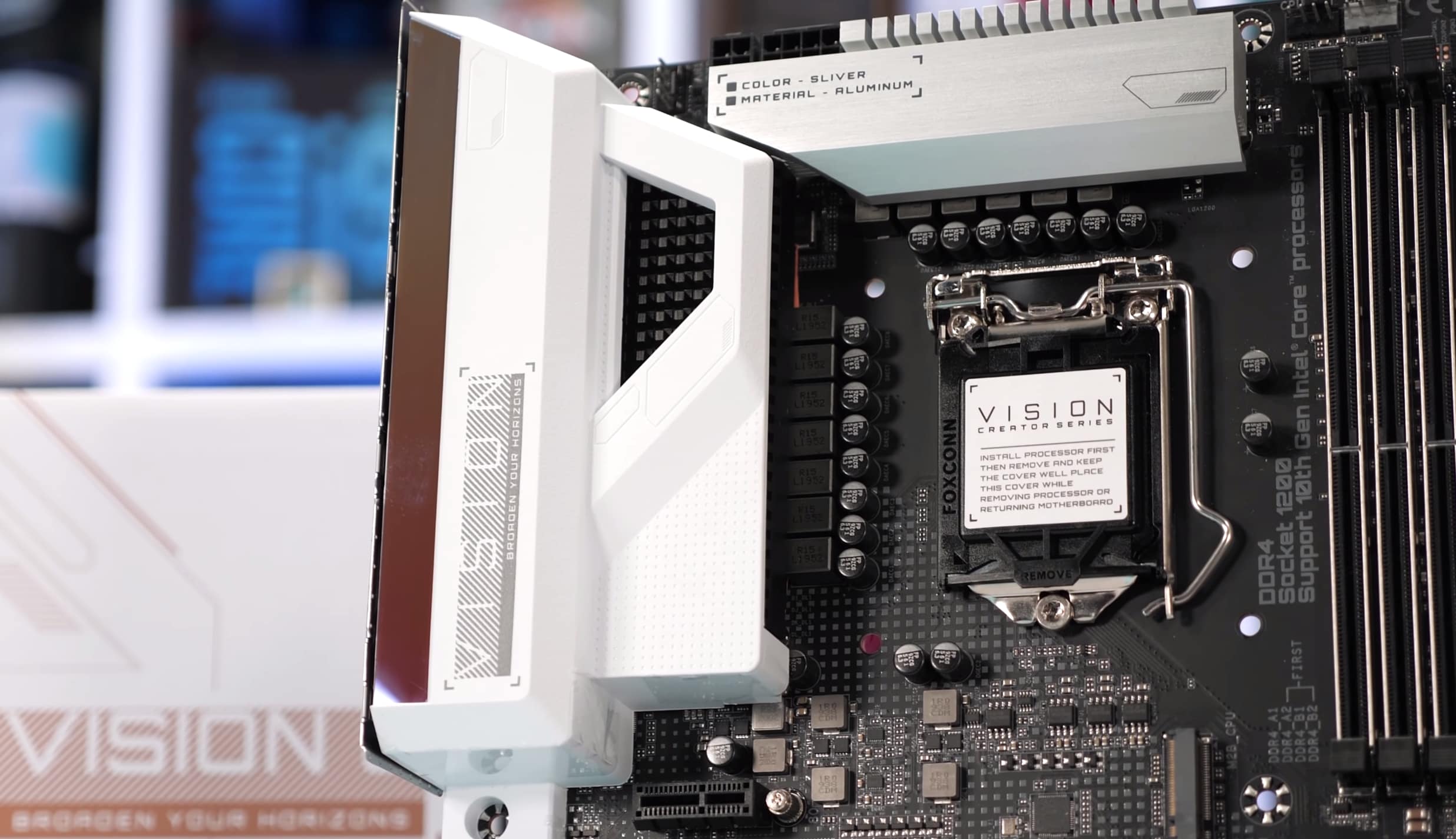The latest generation of Intel Core CPUs have arrived accompanied by the new Z490 motherboard platform. Incredibly, there are over 50 Intel Z490 motherboards on the market, with prices ranging from $150 all the way up to $1,300. That's way more models than there should be, making the task of buying the best Z490 board a rather daunting one. Even though Z490 and Z390 chipsets, as well as the 10th-gen CPUs are very similar from its predecessors, Intel has opted once again to move to a new socket, from the LGA115x onto LGA1200. Most LGA115x coolers will work in the new sockets, but if you're buying a 10th-gen Intel Core processor, you will have to buy a new motherboard.
This buying guide is intended to simplify the process of choosing a new of Z490 motherboard, but in doing so we've had to overlook a huge swath of boards inevitably. The primary goal is to help you avoid any bad boards which are often found at the entry-level, Mini-ITX, and Micro ATX segments.

We have chosen a best mid-range option which looks at boards priced around the $200 mark. But beyond those, motherboards priced between $200 and $400 are largely ignored for no other reason that they're pretty good. They all feature very capable VRMs, so it's just a matter of picking your desired price point and comparing the 3 or 4 boards that occupy that segment based on the features you require.
For example, the Gigabyte Z490 Aorus Ultra and MSI MEG Z490 Unify both cost $300 and they both feature monstrous VRMs. Even if the MSI is marginally better equipped, at that point it won't matter, both are overkill even for an overclocked Core i9-10900K. Gigabyte uses a flasher design, while MSI's Unify range is more minimalist. What we're trying to say is, there's no bad or wrong option, you're very much splitting hairs at that point and we observed all good boards when moving past a mainstream budget.
Best Value Z490 Motherboard
Asus Prime Z490-P

Starting with the best value entry-level Z490 category, pick from two surprisingly good budget ATX boards: the Asus Prime Z490-P and MSI Z490-A Pro.
You might expect all Z490 boards to handle K-series Intel processors well, but that's rarely the case with budget-oriented models, especially if you plan on overclocking. Thanks to a good VRM implementation, both these Asus and MSI boards handled the Core i9-10900K at 5.1 GHz.
Features are sparse, but that's not unusual for Z490 boards priced around $160. Put head to head, they're both excellent and evenly matched. Our suggestion is to choose the model that is cheaper in your region or whichever you prefer from a design perspective. Maybe you have a preference for the Asus BIOS, for example.
There are also a number of motherboards to avoid in this price range: the Gigabyte Z490M Gaming X and Z490 UD are subpar when it comes to VRM quality and struggle to overclocked well. We saw them failing to pass core-heavy workloads with the 10700K and 10900K. But if they're available at much lower prices than the Asus and MSI boards, maybe they could be decent value pairings with a Core i5-10600K, just note your upgrade path will be limited.
As for boards you should avoid at all costs: the Asrock Z490 Phantom Gaming 4, Z490 Pro4, Z490M Pro4 and even the Z490 Steel Legend. We're hoping Asrock can fix the Steel Legend with a BIOS update but for now we've seen that board throttling the VRM well before time.
Best Mid-range $200 Z490 Motherboard
MSI MAG Z490 Tomahawk
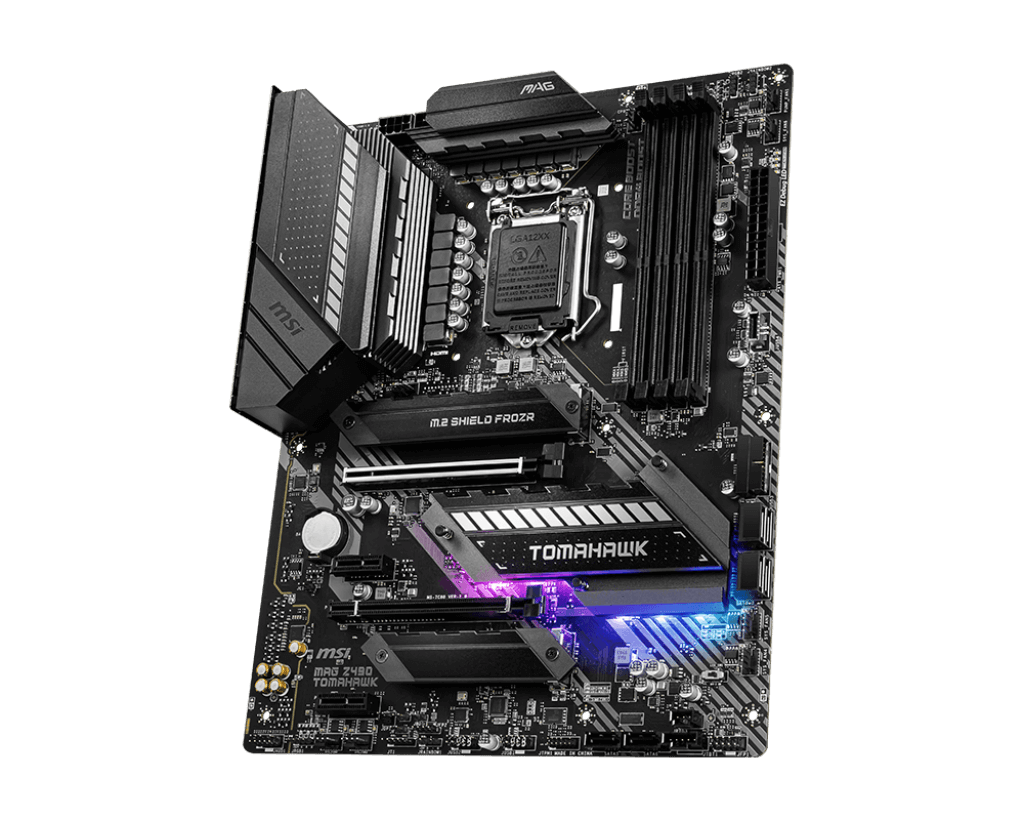
With a little more budget, you can get some really nice boards for up around $200. From day one, a stand out which we featured in our early 10th-gen coverage is the MSI MAG Z490 Tomahawk, it's a great quality motherboard priced at $190. In our testing, the Z490 Tomahawk peaked at just 74 degrees running a Core i9-10900K clocked at 5.1 GHz using 1.35v, so you don't need to spend big money to get the most out of Intel's new 10-core processor, despite the fact that it is extremely power hungry when overclocked.
MSI has gone with a dozen powerstages for the vcore VRM on the Tomahawk, using a dozen 55A powerstages for a combined 660A capacity. MSI also includes massive heatsinks which weigh a combined 393 grams. For comparison, the MSI Z490-A Pro comes with 237 grams worth of heatsinks. You also get some nice features such as 2.5 Gbit LAN, USB 3.2 Gen 2x2 for 20 Gbps support and a few extra USB ports when compared to the cheaper boards.
Our alternative pick, the Gigabyte Z490 Vision G might be worth considering over the Tomahawk for two reasons: at $200, it's the only Z490 board in this price range to offer three full length PCIe x16 slots, though only the primary slot is wired for full x16 bandwidth as LGA1200 processors don't support enough PCIe lanes. The secondary slot is wired for x8 bandwidth and when in use will half the bandwidth available to the primary PCIe x16 slot. Then the third slot is wired for x4 bandwidth.
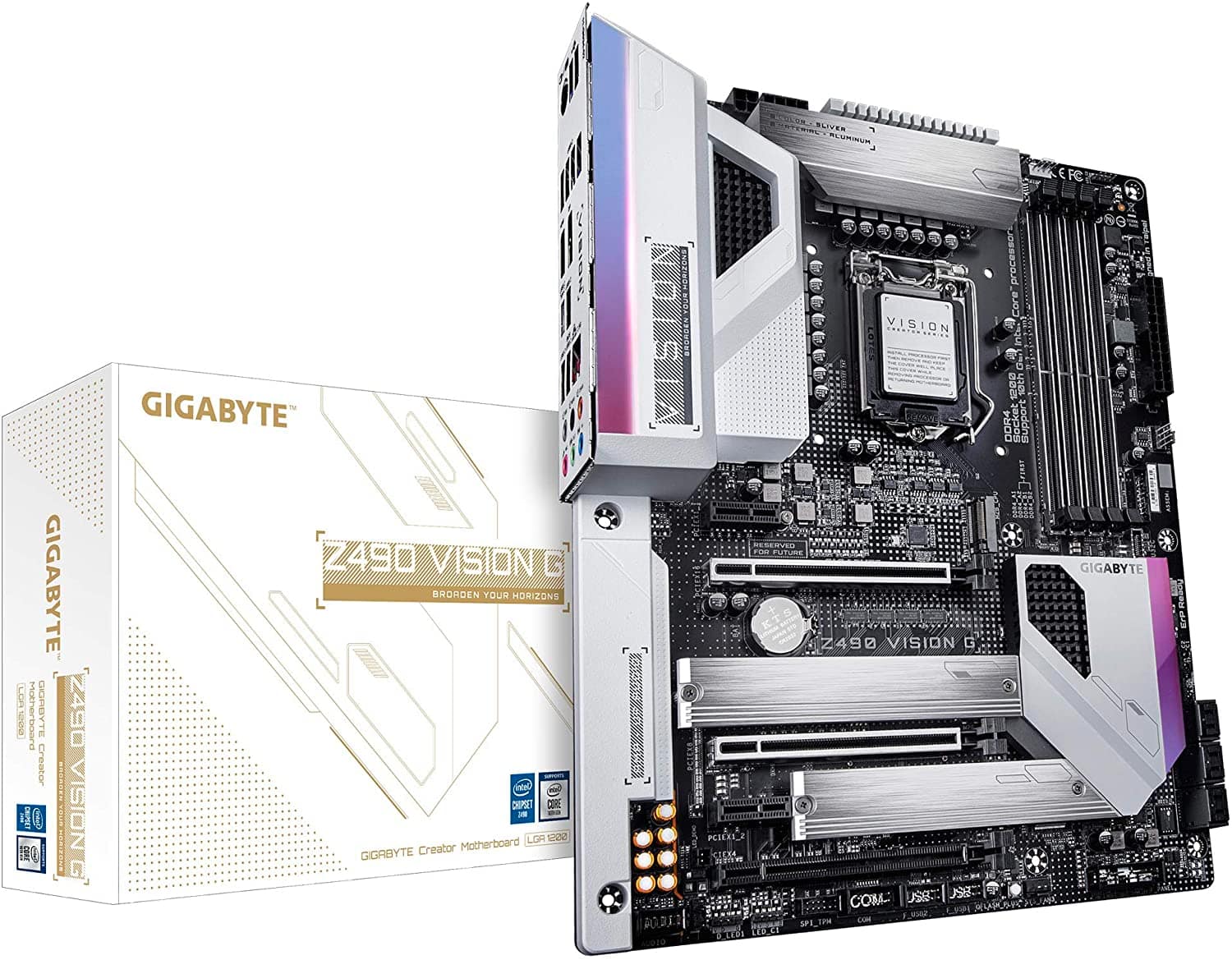
The Vision G also offers two extra USB 3.2 ports on the I/O panel, though it drops Gigabit networking while retaining 2.5 Gbit LAN. In terms of VRM performance the Vision G is roughly on par with the Tomahawk.
Also worthy of mention is the Gigabyte Z490 Aorus Elite. We have tested that board and it's very good, but at the same price as the Tomahawk we tend to prefer the MSI board. The same is true for the Asus TUF Gaming Z490-Plus, overall another good board.
Best mATX Z490
Asus ROG Strix Z490-G Gaming Wi-Fi
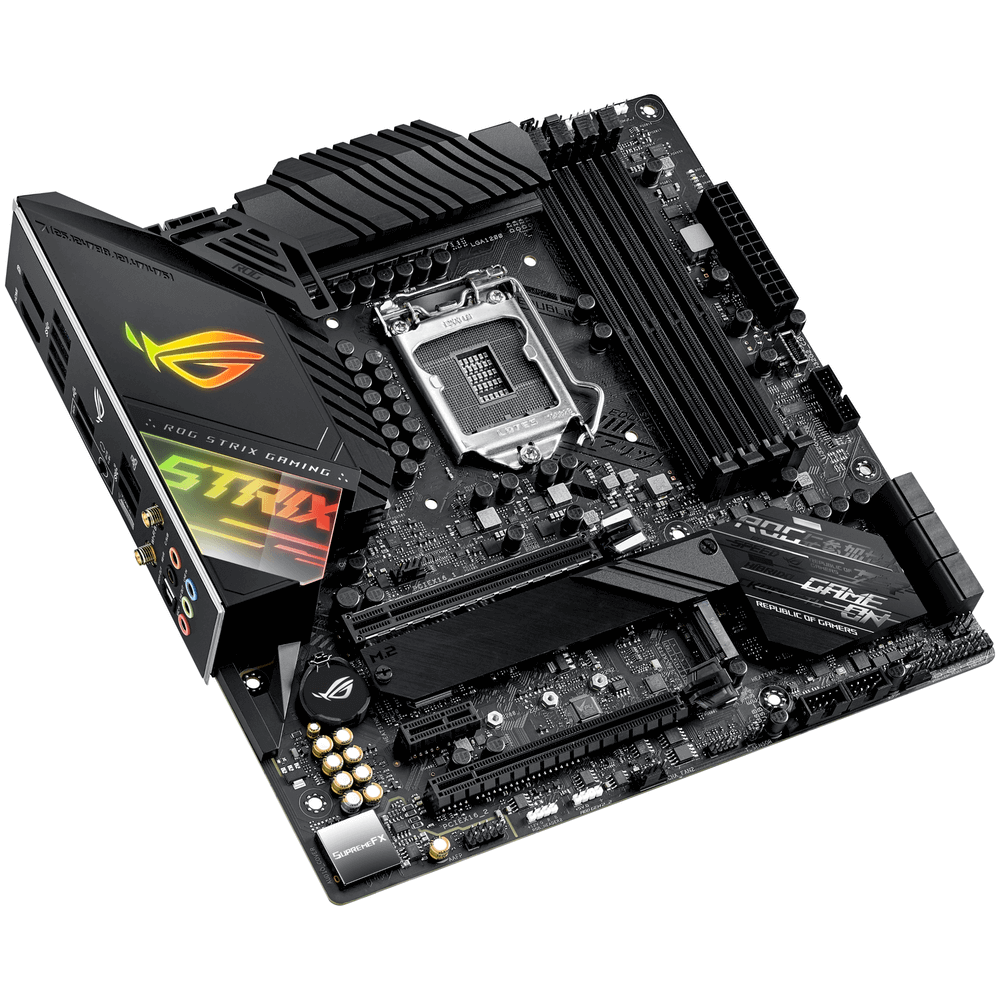
A form factor that seems almost forgotten on the AMD side, it's still well and alive with Intel boards. There are at least 5 mATX options right now with boards from Asrock, Asus, Gigabyte and MSI.
The Asrock Z490M Pro4 uses the same atrocious VRM as the Phantom Gaming 4, so you can give that board a hard pass. The Gigabyte Z490M Gaming X also uses the same VRM as the Z490 UD, so avoid that board.
The Asus Prime Z490M-Plus comes in at just $150. It's not the best mATX motherboard you can buy, but we're happy to report that this is a good quality motherboard. The vcore portion of the VRM packs eight 50A power stages, configured as a teamed 4-phase. We grabbed this board and after some quick tests, the results are quite impressive. It runs around 4C hotter than the Prime Z490-P and that means with a Core i5-10600K overclocked to 5 GHz with 1.35v, you're looking at a peak operating temperature of just 66 degrees with a reasonably well ventilated case in a 21C climate.
Of course, like the Prime Z490-P, the MicroATX version is very limited in terms of features, but that's just par for the course at this price point.
If you're after better networking and a flashier-looking board then the MSI MPG Z490M Gaming Edge WiFi is worth checking out, though we find the $190 asking price a tad high for a board packing the same VRM as their Z490-A Pro.
For the absolute best Micro ATX Z490 motherboard, look no further than the Asus ROG Strix Z490-G Gaming Wi-Fi at $240. It does it all. The board packs a dozen 45A power stages for the vcore portion of the VRM with some rather large heatsinks, so it'll have no trouble overclocking the Core i9-10900K, even with minimal air-flow.
The board comes well equipped with half a dozen USB 3.2 ports on the I/O panel including a USB Type-C port and there's a BIOS FlashBack button as well. Onboard you still get two M.2 slots, two PCIe x16 slots, six SATA ports and four memory DIMMs.
Best Mini-ITX Z490
Gigabyte Z490I Aorus Ultra
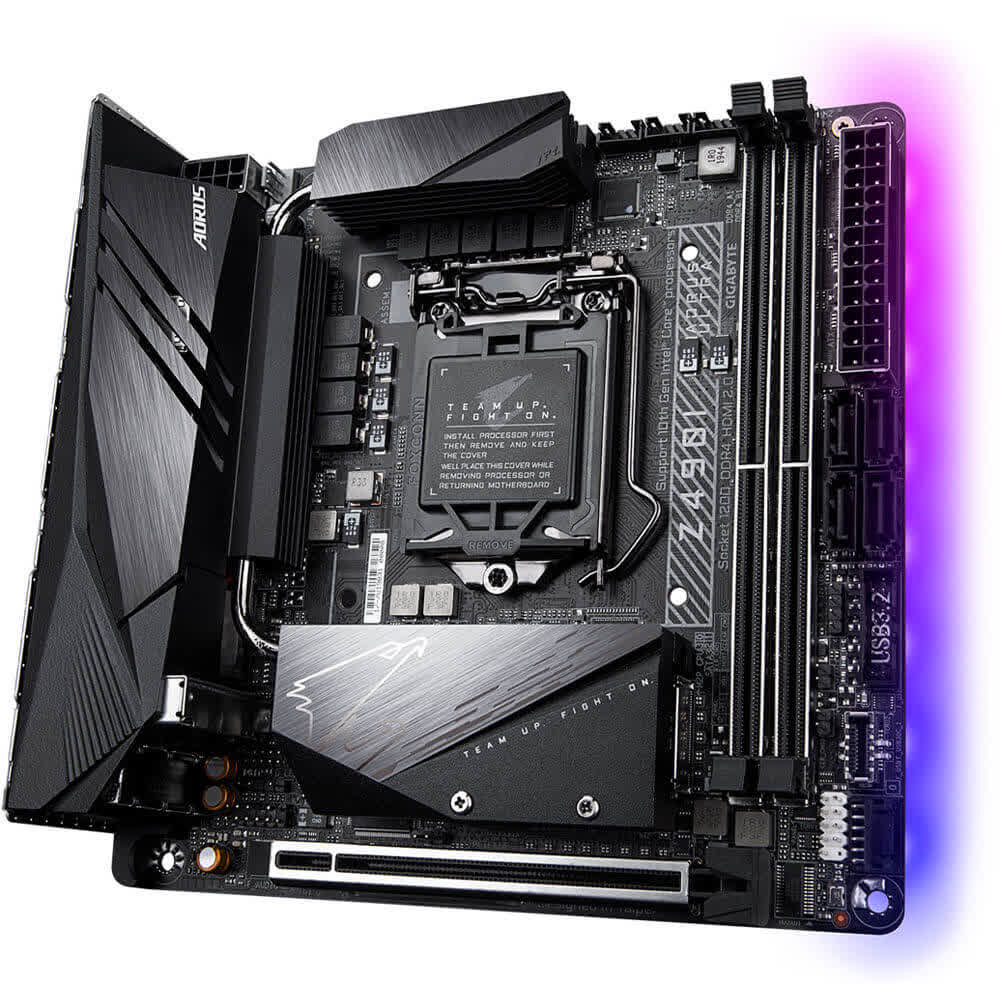
Who makes the best Mini-ITX Z490 motherboard? None of the options worth your hard earned cash are the most affordable, priced around $270 and $300, but they're pretty good though.
There are four boards worth considering, but our two top choices are the Gigabyte Z490i Aorus Ultra or MSI Z490i Unify. Between those two, it's one of those situations where they're so evenly matched that you can't go wrong. The Gigabyte board offers extra USB ports on the I/O panel and has the slightly better board layout that doesn't see some of the SATA ports oddly positioned. It's minor stuff, but that's what gets the Z490i Aorus Ultra over the line for me.
The slightly more expensive Asus ROG Strix Z490-I Gaming is also good, but it features a more crammed CPU socket which can cause problems for cooler compatibility and it costs a little bit more. The Asrock Z490 Phantom Gaming-ITX is also quite good, but suffers the same CPU compatibility problem as the Asus. In fact, it's a little worse in that regard.
Best High-end Z490 Motherboard
MSI MEG Z490 Godlike

If you're simply after the most extreme Intel Z490 motherboard money can buy (without going down the water-cooling mono-block path), there are three very expensive options: the MSI Z490 Godlike, Gigabyte Z490 Aorus Xtreme and Asus ROG Maximus XII Extreme.
If you're after a no compromise solution, then in our opinion that's MSI's Godlike.
Mind you, $750 is an absurd price to pay for any Z490 motherboard, but that's how much these extreme models will set you back. The board packs 16 90A powerstages that are cooled by real finned heatsinks with active cooling. Unless you're pulling off an extreme overclock, we don't imagine the fans will get a chance to spin up though.
On-board features include everything: 10 Gigabit LAN + 2.5 Gigabit LAN, three M.2 slots, two Thunderbolt 3 Type-C 40Gb/s ports, Intel AX201 Wi-Fi 6, Bluetooth 5.1, 8-channel audio and more. The board even features an OLED panel, which MSI has dubbed Dynamic Dashboard II. There's loads more to talk about, but you get the point, if for some reason you need a motherboard that costs more than a Core i9-10900K, this is the one to get.
As discussed in the intro, there's a ridiculous amount of Z490 motherboards on the market, a ton of them priced between $200 and $400, with no bad options to choose from – with the exception of Asrock. The other big three board makers appear to have put quite a bit of time and effort into their boards. We can't recommend Asrock at any of these price points and that's a first for us.
